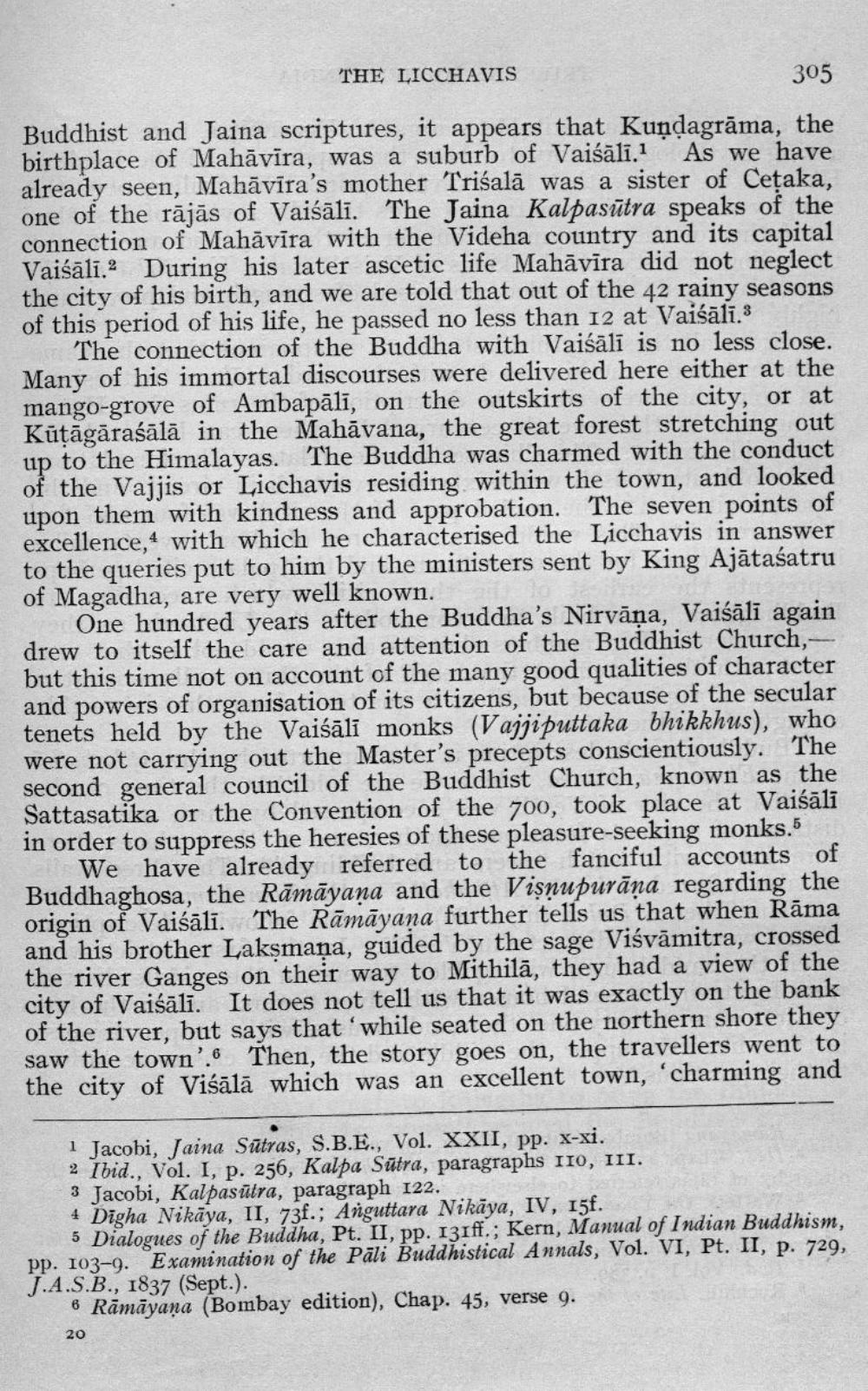________________
THE LICCHAVIS
305 Buddhist and Jaina scriptures, it appears that Kundagrāma, the birthplace of Mahāvīra, was a suburb of Vaiśāli. As we have already seen, Mahāvīra's mother Trisalā was a sister of Cetaka, one of the rājās of Vaiśālī. The Jaina Kalpasūtra speaks of the connection of Mahāvīra with the Videha country and its capital Vaiśāli. During his later ascetic life Mahāvīra did not neglect the city of his birth, and we are told that out of the 42 rainy seasons of this period of his life, he passed no less than 12 at Vaiśālī.3
The connection of the Buddha with Vaiśāli is no less close. Many of his immortal discourses were delivered here either at the mango-grove of Ambapālī, on the outskirts of the city, or at Kūtāgāraśālā in the Mahāvana, the great forest stretching out up to the Himalayas. The Buddha was charmed with the conduct of the Vajjis or Licchavis residing within the town, and looked upon them with kindness and approbation. The seven points of excellence,4 with which he characterised the Licchavis in answer to the queries put to him by the ministers sent by King Ajātaśatru of Magadha, are very well known.
One hundred years after the Buddha's Nirvāṇa, Vaiśālī again drew to itself the care and attention of the Buddhist Church,-- but this time not on account of the many good qualities of character and powers of organisation of its citizens, but because of the secular tenets held by the Vaiśāli monks (Vajjiputtaka bhikkhus), who were not carrying out the Master's precepts conscientiously. The second general council of the Buddhist Church, known as the Sattasatika or the Convention of the 700, took place at Vaiśālī in order to suppress the heresies of these pleasure-seeking monks.
We have already referred to the fanciful accounts of Buddhaghosa, the Rāmāyana and the Vişnupurāna regarding the origin of Vaiśālī. The Rāmāyana further tells us that when Rāma and his brother Laksmana, guided by the sage Viśvāmitra, crossed the river Ganges on their way to Mithilā, they had a view of the city of Vaiśāli. It does not tell us that it was exactly on the bank of the river, but says that while seated on the northern shore they saw the town'. Then, the story goes on, the travellers went to the city of Viśālā which was an excellent town, 'charming and
1 Jacobi, Taina Sūtras, S.B.E., Vol. XXII, pp. x-xi. 2 Ibid., Vol. I, p. 256, Kalpa Sūtra, paragraphs IIO, III. 3 Jacobi, Kalpasūtra, paragraph 122. 4 Digha Nikāya, II, 73f.; Arguttara Nikāya, IV, 15f.
5 Dialogues of the Buddha, Pt. II, pp. 13iff.; Kern, Manual of Indian Buddhism, pp. 103-9. Examination of the Pāli Buddhistical Annals, Vol. VI, Pt. II, p. 729, J.A.S.B., 1837 (Sept.).
6 Rāmāyaṇa (Bombay edition), Chap. 45, verse 9. 20




